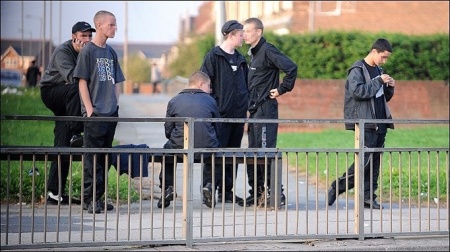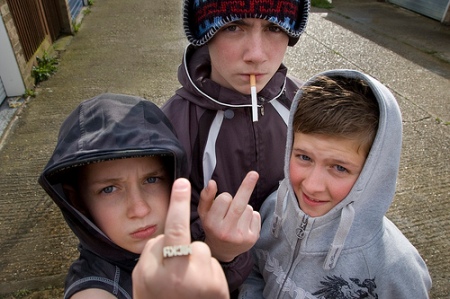
The working classes are not what they were, according to guru Steve Lacey of Leithal Thinking, who gave a talk this week on how the recession is impacting on this group and working class Britain in the 21st C. No longer a homogenous group, the working class has fragmented into six sub-groups and is expanding as a whole. Within these sub-groups, we’re seeing a greater binding of communnities, and a narrowing of attitudes, perspectives, and geographical locale. In recession, brands that want to tap into this market need to look small, talk local, facilitate sharing, and promise instant gratification.
The working class can be segmented into six sub-groups, says Lacey. These are Salt of the Earth (older males with staunch Protestant values); Aspirational Working Class (display middle-class values); Thatcher’s Children (they want money and don’t care how they get it); Chaos Heads (poverty and crime-riddled with the recession dragging more into this group); Family Diamond (want a better life for their kids); and British and Proud (40s males devoted to football, pubs and porn).
Lacey believes the media’s portrayal of the working-class needs to reflect this shift. He believes the media is guilty of demonising this market, with TV shows such as Shameless and Little Britain making poking fun socially acceptable.
The real signpost here we think, is our dated, static approach to segmentation and probably class too. Why do we need labels to identify types? It is increasingly hard to identify consumer groups in the more fluid, ever-changing marketplace. Perhaps we need to change our segmentation models rather than try to shoehorn individuals into groups?
Lacey also talked about the key trends that have emerged from the recession. Localism, conservatism and the desire for quick-release, being the most important. The marketing implications for these mean the ‘buy British’ message and grassroots activity resonates more strongly than ever.
The new working classes want brands that are empathetic and on side. Communications that are reflective, advisory (but not lecturing), talk about attainable achievements, and tap into the ‘glory days’, are all areas brands targeting this market might do well to explore. A sign of Facebook’s maturation is that the working classes are embracing it, which is one of the new tools they are using to reignite their sense of community.
Post-recession, Lacey says ‘trust’ will remain a constant value for this group. We will see more of the ‘ugly side’ of the working classes too, such as racism and drug abuse, but there will also be a slowing down of their pace of life and big dreams will shift to small achievable steps.
The group that stands out as being most resilient through the recession is women, he says, because they are better able to cope with and communicate their problems. One of the most valuable insights was that women are the strongest conduits to social change. Girlfriends he says are key influencers that help get vulnerable men off crack and out of jail. Why aren’t they targeted more in drugs and crime campaigns, we think? And working-class men frequently cite their mums as their heroes. Bless.
Thanks to the beautiful Margot Molinari for this story. Before she worked for Mother, Margot used to be a spy.












